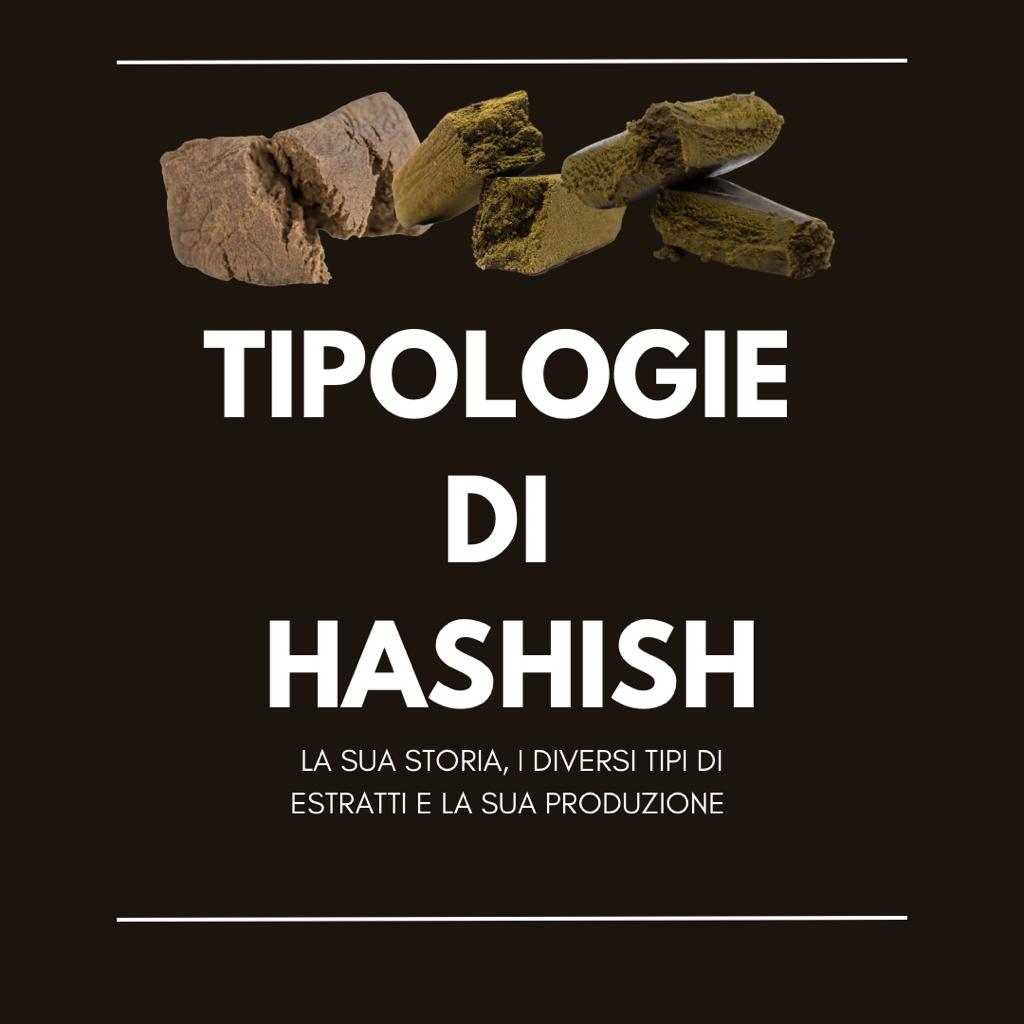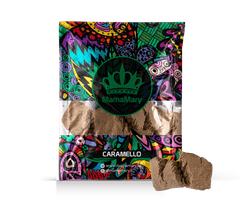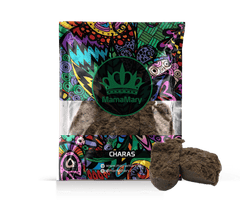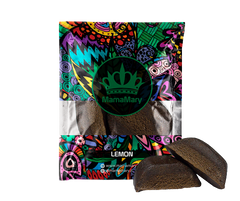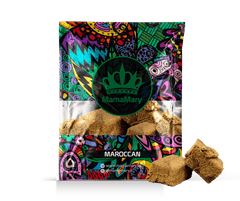Let's discover the long history of CBD hashish, which is among the best-selling and most produced items in the hemp market every year. Hashish is a cannabis concentrate produced by extracting resin from trichomes using various methods, such as sifting or the use of butane. Popular types include bubble hash, Nepalese, Afghan, and Manali hashish. Different types of hashish produced around the world vary in aroma and consistency, influenced by the extraction method and the cannabis used

In this article we try to take stock of one of the most popular topics, that is, CBD hashish: whether it is dry or soft hash, these products are conquering the market and the hearts of many consumers.
Hashish is a cannabis concentrate obtained from the resin of the female inflorescences of the plant, especially from Cannabis indica strains. There are different types of hashish, produced with different extraction methods, such as hand-rubbed hashish or bubble hashish. The processing of cannabis can produce crumbly or dense hashish, and the quality varies depending on the resin and the production process.
Among the most popular types of hashish are those obtained from kief, which is pressed to create high-quality hashish. Hashish consumption is widespread in many parts of the world, where different forms and consistencies are appreciated, from very spicy hashish to the more delicate one. The best quality hashish is obtained with artisanal techniques, guaranteeing a product rich in aroma and potency.
In this little guide we will show you how it is produced and what types of hashish exist in the world today. Ready? Let's go!
The History of Different Types of Hashish from Around the World
Although CBD hashish is a relatively new product, the history of hashish in general dates back thousands of years. It has been used in various forms all over the world, from China to India to Africa to Europe. In many of these cultures, it was in fact considered a powerful medicine that could be used to treat a wide range of ailments.
The use of hashish was introduced to Europe in the 19th century by French and British explorers visiting countries such as Egypt and India. Initially, hashish was considered an exotic and luxurious drug that was consumed only by a select few. However, over time, it became increasingly popular, especially among bohemian artists and writers who frequented Parisian cafés.
It became even more popular in the 1960s due to the hippie counterculture and the growing popularity of cannabis in general. While high-THC marijuana was the most common form of cannabis used during this time, hashish remained a popular product among many cannabis users.
It is currently one of the most popular ways to consume high-CBD cannabis. It is produced from the cannabis plant, from which it is then extracted using solvent-based extraction methods, such as butane or ethanol, to separate the trichomes from the plant matter. These trichomes found in pollen, which are the small bumps on the surface of cannabis leaves and flowers, contain high levels of cannabinoids, including CBD. For this reason, what will result from this process will be a product with high concentrations of CBD and different shades of color and consistency.
The production of hashish

We have mentioned how the production of CBD hashish occurs but let's go into specifics:
The cannabis used to produce legal hashish is specifically grown to contain a low percentage of THC. Cultivation takes place in controlled environments, where the conditions of light, humidity, temperature and nutrients are regulated. In this way, the cannabis plant grows uniformly and produces flowers rich in CBD.
Once the cannabis flowers are harvested, they are subjected to a drying process, which consists of eliminating the water present inside the flowers. This process is essential to preserve the quality and properties of the product.
Next, the dried flowers are processed to separate the CBD from the rest of the plant. There are several methods of extracting CBD, but the most common is to use solvents such as ethanol or CO2. These solvents allow the CBD to be separated from the plant matter, creating a pure CBD extract.
Once the CBD extract is obtained, it is mixed with other ingredients to create legal hashish. These ingredients may include essential oils, terpenes , herbal extracts, and other natural compounds to enhance the flavor and properties of the hashish.
Finally, legal hashish is tested to verify its composition and the quality of the product. The quality standards are rigorous and include testing for the presence of THC and other contaminants.
This is the basic production process described above, but different techniques and processes can be used to obtain all the different types of hashish that exist. In the next section of the blog we will explain what these varieties are and the geographical location associated with them.
The different varieties of hashish

Moroccan Hashish
Moroccan hash is one of the most common and popular varieties. It is produced in Morocco and parts of North Africa, where cannabis has been cultivated for centuries. Moroccan hash is usually dark brown or black and is compressed into hard bricks. It is known for its potency and earthy flavor.
Afghan Hashish
Afghan hash is produced in Afghanistan and parts of Pakistan. It is known for its soft, sticky consistency and strong, spicy flavor. Afghan hash is often light brown or pale yellow in color.
Lebanese Hashish
Lebanese hash is another variety of hashish known for its quality. It is produced in Lebanon and parts of Syria and Turkey. Lebanese hash is usually light brown in color and is compressed into flat blocks. It has a mild flavor and a smooth texture.
Pakistani Hashish
Pakistani hash is one of the main types of hashish produced in the world and is obtained from the female inflorescences of mature Cannabis indica. The resin, rich in THC and CBD, is extracted by sifting the kief from dried cannabis buds and then pressed to obtain the final product. Unlike bubble hash, which uses water and ice, Pakistani hash follows a traditional production method that often includes heating and hand-working. This creates blocks of creamy, crumbly hashish, with a very spicy aroma and a dense consistency. Among the various types of hashish that exist, Pakistani hash stands out for its quality, similar to that of Afghan and Manali hashish, often transported wrapped in goat or sheep skins. With a very high concentration of THC, this hashish is prized in the hashish trade in Afghanistan and other countries around the world for its rich flavor and artisanal workmanship .
Hashish from Nepal
Nepalese hash is produced in Nepal and parts of the Himalayas. It is known for its potency and earthy, sweet flavor. Nepalese hash is often dark brown or black in color and is compressed into hard blocks or bricks.
Indian Hashish and Charas
Indian hashish is produced in India and parts of Pakistan. It is known for its superior quality and delicate, aromatic flavor. Indian hashish is often dark brown in color and compressed into hard bricks.
In conclusion, hashish is a complex substance with many different varieties. The hashish varieties listed above are just some of the most common and popular, but there are many others that have unique distinguishing characteristics, and the quality certainly varies based on the type of flowers and techniques used to produce it.
At MamaMary we have a selection of the best types currently available, from the softest to the driest, we leave you with the link to our extracts catalogue:
https://mamamary.io/collections/hashish-cbd
Let us know with a comment if the article was useful to you, if instead you have any other questions that we will be happy to answer

